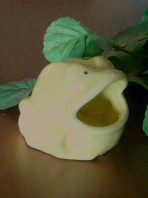 by 48Rob » Tue Jul 14, 2009 1:14 pm
by 48Rob » Tue Jul 14, 2009 1:14 pm
Are you running fans when applying the varnish to keep cool, or hasten drying time?
Too much breeze can flash dry the surface and prevent the solvents from evaporating.
High humidity can also lengthen drying times.
I've had on occassion to wait 3-5 days for varnish to dry, especially if I was in a hurry, and should have waited another day for stain to dry, or other coats to dry.
If the varnish is still very sticky to the touch, wipe gently with a very clean lint free rag and mineral spirits to remove "excess" varnish.
If it is just a little soft and tacky, gently rub with 220 grit sandpaper, with the grain, just a couple passes (GENTLY) to break the surface, then allow to dry further.
You're only sanding the varnish, not the original finish under it.
Setting a fan in the room to blow air over the panels will help too.
Never blow air on the panels, just over them, as in keep the air in the room moving around.
Of course this is only done after the finish has hardened to the point dust will no longer stick...
On another note, when applying finish to "new" panels from the store, or where ever, it is wise to first sweep away and dust, then gently clean the surface with mineral spirits, then lightly sand after the solvent has dried.
Then remove dust, and thin the first coat of varnish between 25 and 50% with mineral spirits.
Then sand with 220 between coats.
Depending on the project 2-6 coats may be needed.
It usually takes 3-4 coats to seal a plywood panel, but 5-6 is much better.
Generally 24 hrs drying time is required per coat, plus sanding and cleanup time beteen coats.
"Varnishing" a panel, correctly, so it will last, is not something that can be done on a Sunday afternoon...
You may well know all this, but for someone just learning, it is important to not assume that because it is brand new at the store, that it is clean and or ready for finish...
Rob
Waiting for "someday" will leave you on your deathbed wondering why you didn't just rearrange your priorities and enjoy the time you had, instead of waiting for a "better" time to come along...





